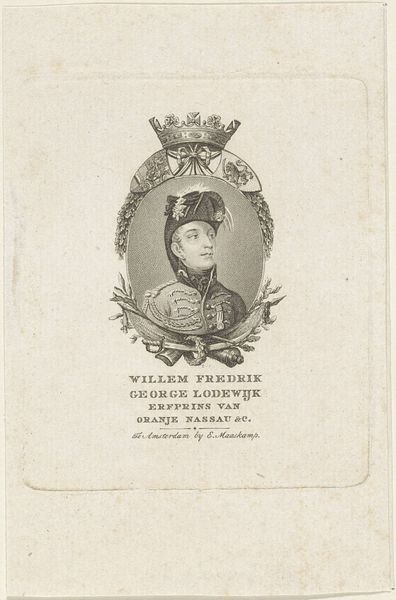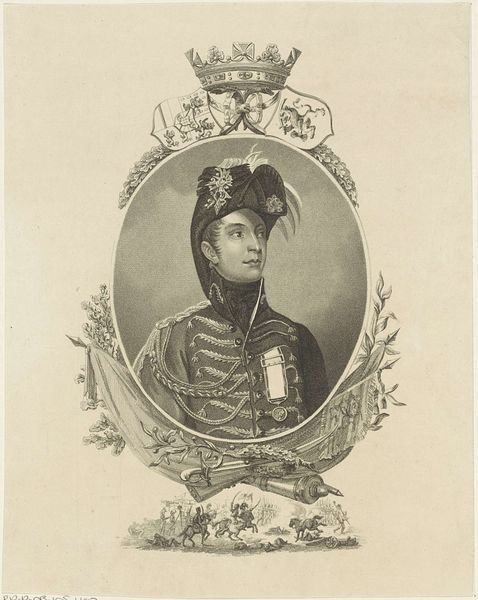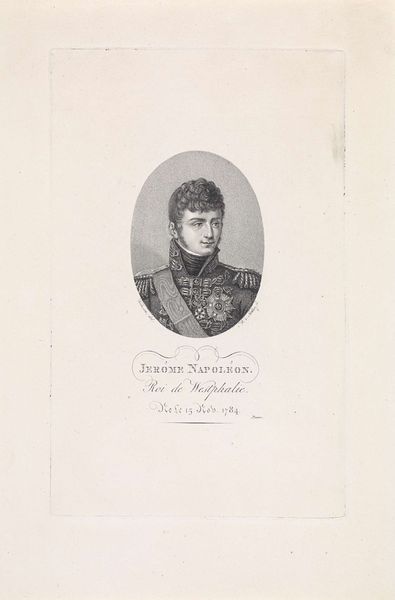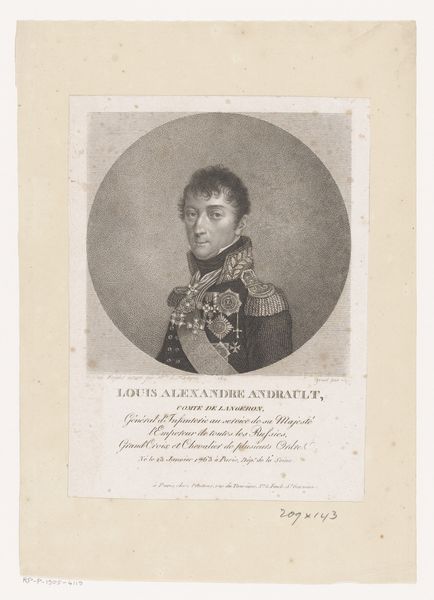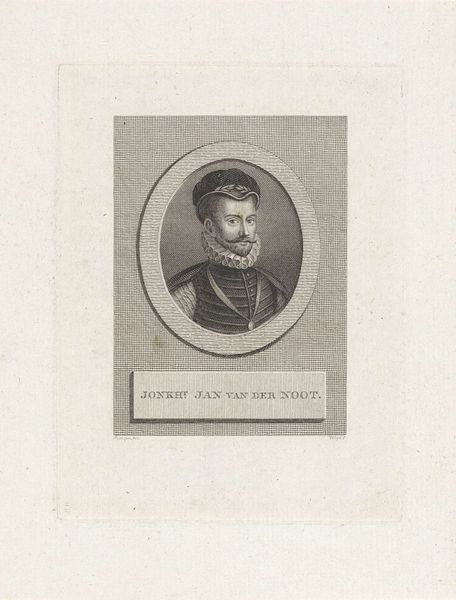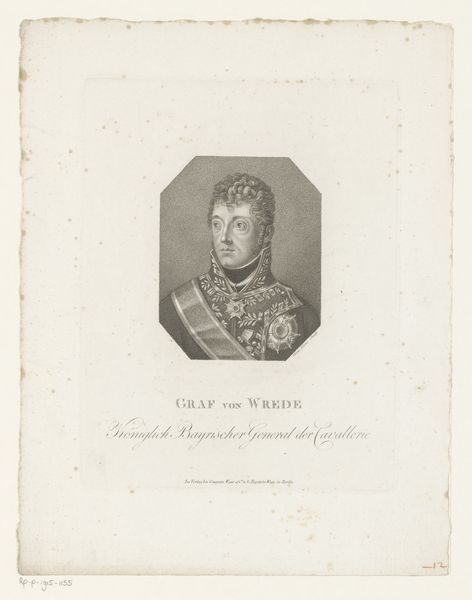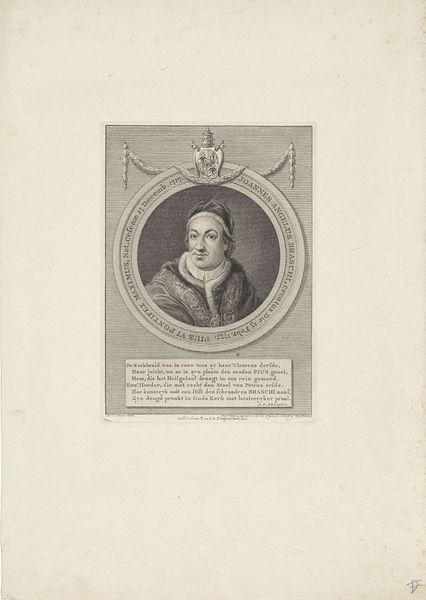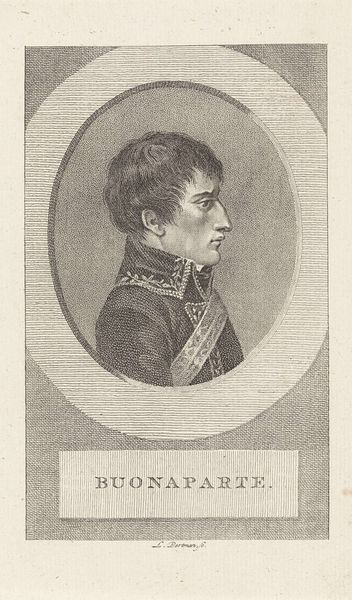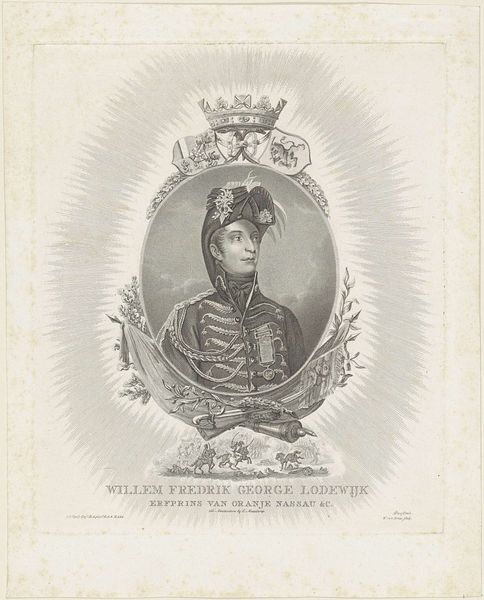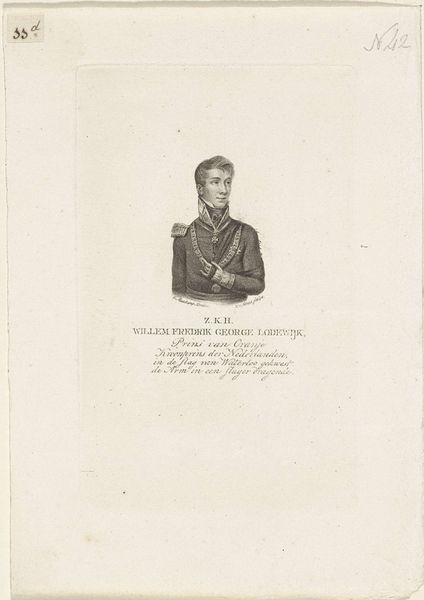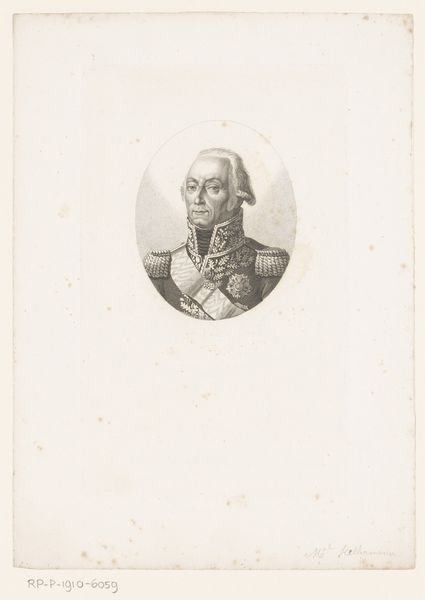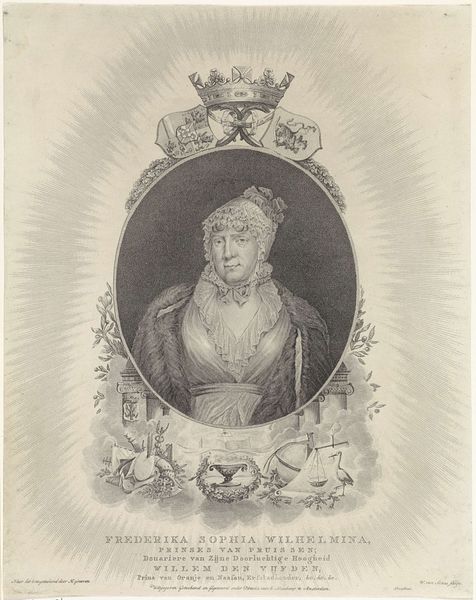
engraving
#
portrait
#
neoclacissism
#
old engraving style
#
history-painting
#
engraving
Dimensions: height 128 mm, width 77 mm
Copyright: Rijks Museum: Open Domain
Curator: Let's turn our attention to this portrait of Willem II, King of the Netherlands. Created sometime between 1810 and 1899, the artwork resides here in the Rijksmuseum collection. The piece is an engraving, its creator listed as Anonymous. Editor: It's immediately striking how martial it is. I’m getting a powerful sense of dynastic authority from the crown perched atop the image, which dwarfs even the central portrait. It feels… deliberate, almost staged to elicit deference. Curator: Indeed. Framing William II in this way, adorned with the trappings of monarchy, speaks volumes about power. The imagery locks into Neoclassical aesthetics, and given its production context, likely promotes notions of national identity and regal strength after periods of revolution. What does that sword signify to you? Editor: The sword, crossed with a laurel wreath, definitely reinforces this theme of strength, but also points to military honor and victory. We're presented with this careful concoction that weaves together power, honor, and tradition—signifiers crafted to establish his image within a cultural memory. It's fascinating how the visual symbols become shorthand for larger political claims. Curator: Exactly. The intersectionality here emerges when considering the historical implications of monarchy and the legacy of colonialism within the Netherlands. William II reigned during a period where debates surrounding social justice were amplified by these systems. The image's neutrality is challenged when viewed alongside his policies regarding those territories and peoples under Dutch control during that era. Editor: It does highlight the way symbols function across time. Looking at it, I'm aware that, removed from its immediate context, the image also risks flattening history into simple codes. This man and his crown become symbolic containers into which people can pour very different aspirations and ideologies. It’s interesting how those associations shift as time changes our perspectives. Curator: Absolutely, which brings us to a key part of our understanding. Art can, in its very stillness, be a contested battleground of cultural and political significance, a place for our ideas about the past to play out in the present. Editor: Right. Ultimately, by unpacking these layers of symbolism, we come away with a deeper understanding not just of William II, but of how cultural memory is created, reinforced, and questioned.
Comments
No comments
Be the first to comment and join the conversation on the ultimate creative platform.
